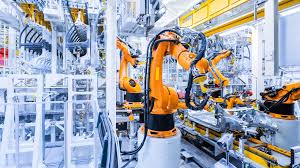MANUFACTURING
Business of Manufacturing – Summary
Manufacturing is the process of converting raw materials or components into finished products using machines, labor, and technology. It is a key sector in the economy, contributing to industrial growth, employment, and exports.
Key Aspects of Manufacturing Business:
1. Types of Manufacturing
Job Production – Customized, small-scale production (e.g., handmade furniture).
Batch Production – Producing goods in groups (e.g., bakery items).
Mass Production – Large-scale production of standardized goods (e.g., automobiles).
Continuous Production – Uninterrupted manufacturing (e.g., chemical plants).
2.Manufacturing Process
Design & Planning – Product development, material selection.
Sourcing & Procurement – Acquiring raw materials.
Production & Assembly – Using machinery, labor, and automation.
Quality Control – Ensuring product standards.
Packaging & Distribution – Ready for market delivery.
3. Factors Affecting Manufacturing
Raw Material Availability – Cost and accessibility impact production.
Technology & Automation – Efficiency and cost reduction.
Labor & Skill Level – Workforce expertise.
Market Demand – Consumer needs shape production.
Government Policies – Regulations, taxes, and incentives.
4. Challenges in Manufacturing
High Initial Investment – Costly setup and infrastructure.
Supply Chain Disruptions – Logistics and material shortages.
Competition & Innovation – Need for continuous improvement.
Environmental Regulations – Compliance with sustainability norms.
5. Trends in Manufacturing
Smart Manufacturing – Use of AI, IoT, and robotics.
Sustainable Production – Eco-friendly practices.
Customization & 3D Printing – Personalized manufacturing solutions.
Globalization & Outsourcing – Cost-effective production strategies.
Manufacturing remains the backbone of industrial economies, continuously evolving with technological advancements and market dynamics.


